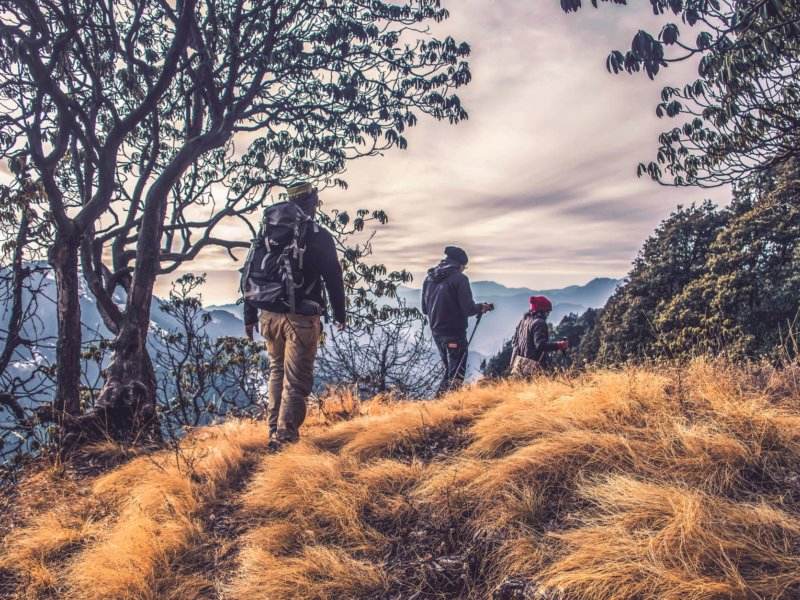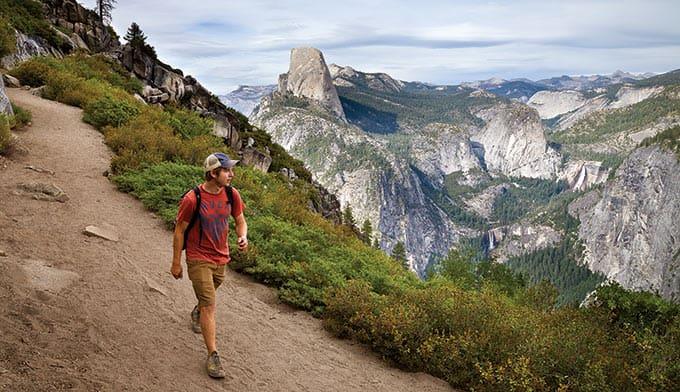Hiking has been increasingly popular since the pandemic began, and it appears that this rekindled appreciation of the great outdoors will last until 2022 and beyond. What to wear when hiking? Anyone planning to hike should know what to wear so they may be comfortable and ready for anything the trails may throw at them, even if it’s just to the park down the road. Here, we’ve listed a few prerequisites as well as more detailed information that’s specific to each season.
Table of Contents
What To Wear When Hiking: The Basics
It’s simple to overpack and overthink things when you’re just starting out in the hiking world. Bringing something strategically is a preferable alternative. “According to Chad Alexander, an experienced hiker and the founder of Fitness Minimalists, many novice hikers carry far too much gear, which can make hiking more physically demanding than it needs to be. “Experienced hikers keep their packs as light as possible by only bringing the best and most lightweight essentials. It is common to see people carrying two or three bulky cotton sweaters, five T-shirts, and five pairs of socks.”
Choose Materials That Wick Away Sweat
Cotton retains water, so any amount of perspiration will stick to your T-shirt, socks, or underwear and stay there for the duration of your hike. Cotton is not your friend when hiking on the trails (and let’s not even talk about denim).
Over Shorts, Pants Are Preferable
Although it’s not always a good idea to wear hiking pants instead of shorts, in general you’ll be more comfortable. Shorts expose your legs to risks like cuts, bruises, Poison Ivy, ticks, and other injuries if the trail you’re exploring has any overgrown bushes or grassy patches, low branches, protruding rocks, or other obstacles, which is the case for almost all trails.
Your Best Friend Is Layering
Can’t decide whether to wear a T-shirt or long sleeves? If you’re unsure whether you’ll need a thin anorak or a thicker fleece, wear both. Worried that wearing shorts will cause your legs to become cold? Include a pair of pants in your bag as well. When in doubt—and even when you aren’t in doubt—you should always pack or wear extra layers.

Verify That You Are Wearing The Appropriate Shoes
For some people, this means investing in a pair of genuine hiking boots with additional ankle support, but for others, trail running shoes or even your everyday sneakers will do (by sneakers, we mean footwear with enough traction and foot support, not casual streetstyle sneakers like AllBirds or Converse).
Dress In Comfortable Clothes
Make sure you have a full range of motion so you can clamber up and over rocks, raise your arms to move a tree branch, or squat to sit on a rock. This may seem obvious.
What To Wear When Hiking: By The Season
Let’s get more specific about the requirements for clothing by season now that we’ve covered the fundamental clothing considerations. These requirements will vary based on where you live and what stage of the season you’re in (i.e., early fall vs. late fall). Here are some general recommendations for selecting the best outerwear according to season.
Spring & Fall
The reason that spring and fall are grouped together is because these more temperate and variable seasons have similar layering requirements. Hiking boots are preferred over other types of footwear by many outdoor experts. sneakers or hiking sandals due to the possible temperature fluctuations and muddy trail conditions from snowmelt and rain. If the boots are waterproof, they also have the added benefit of keeping your feet dry while providing traction and support. Additionally, a lightweight, packable jacket that is windproof and waterproof will help you stay cozy during these unpredictable, rainy seasons.
Depending on how chilly it is during the hike, a long-sleeved hiking shirt makes a great mid-layer. Incorporate a wicking base layer after your short- or long-sleeved top. If the weather is chilly, a zip-up fleece jacket is a good addition. For a brisk spring or fall morning hike, I prefer convertible pants that I can quickly zip off when it gets warm. The sun should be kept out of your eyes, and you should also wear a hat to prevent getting wet.
Summer
I personally enjoy summer hiking because it allows me to wear whatever I want! It usually doesn’t call for constantly putting on or taking off layers, making it possible to combine a hike with a swim. As a result, it’s critical to be aware of environmental risks (e.g., ticks, poisonous plants, snakes, etc.) and terrain when choosing summer hiking clothes. On most surfaces, hiking sandals and sneakers are suitable, though longer hikes may still call for hiking boots. To keep sweat off your skin, hiking socks, bottoms, and shirts must be made of breathable, wicking materials (never cotton). When it’s hot outside, wearing lighter colors will help you stay cooler. In addition, unwelcome hitchhikers often favor darker hues. Sun protection for your face and neck can be provided by a wide-brimmed hat!
Winter
Hiking in the winter is a completely different experience, but it’s worth the extra work to take in the wintertime beauty of nature! Layering is the key here: a base layer with insulating qualities like wool or cost-effective synthetic materials; an insulating, detachable middle layer; and an outer layer that is waterproof and windproof. A comfortable winter hike also requires warm gloves, warm wicking socks, hiking boots, and accessories like a wool or synthetic beanie hat. Check out these articles on what to wear when hiking in the rain and winter for more in-depth advice on winter outerwear as well as information on adult winter gear.
Environmental Considerations
- Some trails pose particular difficulties. Check online to see if the people who live there have any advice on what to wear specifically for the place you’re visiting. Examples might include:
- When local populations of ticks, mosquitoes, no-see-ums, black flies, or other pests may be on the rise, consider wearing long sleeves, long pants, clothing with built-in insect repellent, or bug-net clothing if you’ll be hiking through brushy woodlands, a deep, dark forest, or the Everglades.
- Although wearing tall leather hiking boots in the desert may seem counter-intuitive, they provide additional protection from snakes.
- If your trail will be traversing numerous snowfields, waterproof gaiters are a plus. You might find yourself doing a lot of “post holing” when the snow becomes pliable in the afternoon sun.” Boots that are waterproof are also beneficial in this situation.
Conclusion
You may hear hikers say that there is no such thing as bad weather, only inappropriate clothes. This article provided some precautions for your hiking clothes.


